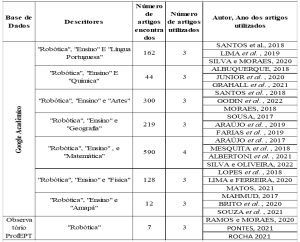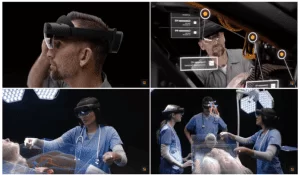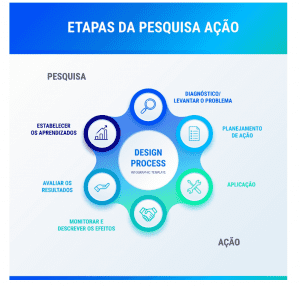SANTOS, Alan Ferreira dos [1]
SANTOS, Alan Ferreira dos. The school inclusion and disability in the classroom. Multidisciplinary Core scientific journal of knowledge. 01 year. Vol. 09. pp 754-762. October/November 2016. ISSN:2448-0959
SUMMARY.
With the ascendancy of public policies for social inclusion, the renegade/excluded individuals in society, equal rights in relation to a dominant population and greater purchasing power, the subject came to be insert in the most varied contexts, and a one is the classroom, this process if perpetuated throughout society, and your tread shows us the difficulties faced by teachers and parents in the child in such a context. Method: a bibliographical research of qualitative nature. Objectives: understand the difficulties in the process of inclusion of the student with disabilities and barriers to access to your full development cognitive, affective and cultural. Conclusion: it has great difficulty on the part of teachers in dealing with students with disabilities, causing distress and suffering for those who teach, as to who learns, because of external factors, to a greater or lesser extent affects the development and the teacher-student relationship (infrastructure, teaching materials and physical space adapted). It was concluded, that ensure an information/training space could collaborate to promote discussions on the factors related to low expectations of parents and teachers in relation to the development and learning of the disabled and so, enable a reflection that directs towards claiming public education improvements.
Key Words: School Inclusion. Disability and learning. Professor and disability.
INTRODUCTION
We can realize the great difficulty in school inclusion about some children, especially the disabled. The learning process becomes inefficient because of the inability of teachers dealing with the student, on account of the conflicts generated in the classroom related their interactions and even for the lower efficiency and results proposed by the institution schools.
In the Decade of 1980, the concept of social inclusion, gaining strength from 1990, in this period then the purpose of the right to equality in the various human aspects (disability, ethnicity and sexuality) assisting in the development of the individual and contributing in this way to the insertion of this society.
However, if proposed question, how is the process of inclusion for the scope. Wondering if the professionals which will be responsible for the development and adaptation of this student in special condition, are in proper State to perform this role within the units of teaching and learning. And also if they are not attached to a technical role in relation to this student, limited to just the capabilities and disabilities without acknowledging that beyond the rational function, the subject is moved by emotions, which has great influence in the process of development.
DISABILITY AND SCHOOL INCLUSION
The article "what is the place of the student with disabilities? The collective imagination of teachers on the school inclusion (2008) ", made by students of the Pontifical Catholic University of Campinas (PUCC), comes from a psychoanalytic point of view the collective imagination of teachers of higher education, on the theme of School inclusion procedure Designs-Stories. Based on this article can say that the process of inclusion might be something very painful, both included, as it will have to deal with your insecurities and emotional suffering in front of your disability, as for the professional who lidara with this process, and the latter bringing up his anguish, impotências and uncertainties about this student, as noted by some authors, as SEN and NAINA (2006). The authors of the article, shows from the concept of Winnicott representations of teachers in relation to apprentices:
[…] making use of this winnicottiano concept, we could say that, in the collective imagination of teachers themselves would not be able to provide an adequately good students with special needs, which should then be under the care of their mothers good enough, instead of attending regular education and awaken us teachers, feel they're in an environment overrun (FISHER Camila, TACHIBANA Mirian, 2008 et.al, p. 162)
Does the school unit offers students and professionals in the technical, emotional and psychological support they need to tackle the various feelings involving the process of inclusion so that both can play your paper and with less suffering?
As says Emilio (2004) the emotional greeting is essential for everyone involved in the school context for that to occur successfully. The teacher or professional who will deal with a student in special conditions should feel supported emotionally and have full support in relation to the development of the school inclusion with relevant information serving him holding, Winnicott (1960/1994), to perform your work in a more human and not just technique, as currently offers specialty courses regarding school inclusion.
When we talk about people with intellectual or physical disabilities, specifically children and young people, we must discuss the access to your education, because of the difficulty in teaching and find qualified professionals who are ready to deal with the demand, according to some school census data (1999), about 52.3% of students who have special needs are enrolled in regular schools, among these students great part are enrolled in private schools, and about 19% are enrolled in kindergartens or preschools. As the law itself says, in article 29 of law No. 9,394/96 (guidelines and Basis-/LDB) States that:
[…] the early childhood education, first stage of basic education, aims at the integral development of children up to six years of age, in their physical, psychological, social and intellectual, complementing the action of the family and the community. (NISKIER, 1997, p. 309).
In contemporary times education is failing, there are educators prepared to welcome and develop the skills needed and required, for such children and young people, in addition to this, the absence of infrastructure becomes an obstacle and the materials Adaptive teaching are inaccessible. The professionals who work with these kids, the more prepared they are those that give class in private schools because the school itself offers a better preparation, or in some cases most dedicated teachers, the same if perfect, going lectures and courses.
We can also mention the difficulty formulaic, usually built from the exacerbation of the difficulties observed in the comparison between individual disabled people and normal, without considering the various constraints and capabilities of each individual.
The perception of teachers with respect to the admission of professionals connected to education of disabled children, the helpers class, the reduction measures students per classroom, fitness and adaptation of the physical space and the materials , is nothing more than a facilitator both to this child, as for the other students, efficient learning, so that, in these conditions can develop positively, include and live without prejudice. Nevertheless, the lack of preparation is felt by government agencies, according to the author. Minto, points out that the National Education Plan-Executive proposal to the National Congress (PNE/MEC) recognizes that:
[…] the schools are, in General, desaparelhadas for this type of care, and teachers are not enabled to deal with these children, since, until recently, not recognized as your responsibility to educate children with special needs (LIE, 2000, p. 13).
All those discussions demonstrate the need for professionals to develop their skills and better training for those who are still studying, always focusing on the age group of 0 to 6 years where the child's development and the explanation of their potential, in addition to that, set as an imperative the adaptation and adjustment of teaching material and the physical space. Among the different disabilities are physical, mental, hearing, visual and multiple.
In relation to mental disabilities, Sousa (2008) describes results in which mental deficiency is perceived as a condition determined by organic variables, mainly by public school teachers that tends to produce generalisations and labels on the child by means of psychiatric diagnoses.
To visual and auditory impairment, Maruyama, Sampaio and Rehder (2009) in a research on teachers ' perception about the visual impairment, found that most believe that students with vision loss have difficulty in learning process . L (2006) States that the inclusion of the student with hearing impairment is inefficient, because of "misinformation and ignorance about deafness and on appropriate modes of attendance the student deaf are frequent" (p. 176).
For the hearing impaired, the issue of communication, which is done through the language of Pounds, is an important point, as most of the teachers do not have training in Pounds, which makes such communication and therefore make these students about others have problems to your social interaction in the classroom. The same is valid for student with mental disabilities, in that communication also ends up being impaired.
Already the physical disability, the problem would not be disability, or the child itself, but rather in the environment that must be prepared to receive it. For students with multiple disabilities, Kassar (1999) States that the school "learning can be a kind of new learning in the life of the subject, be accompanied and systematized. When well planned, promotes the development of the subject, allowing your systematic access to culture produced historically "(KASSAR, 1999, p. 86 apud NERY, 2004, p. 288).
CONCLUSION.
Children with disabilities must be included in our society, and to that end, it is necessary that the professionals are trained and prepared to maintain the necessary care. We look at many moments of sociological evolution, children with disabilities, not attended regular schools, and should attend specialized schools, with specialized classes depending on the disability.
In the year of 1994 after publication of the Declaration of Salamanca, the proposal for a social inclusion school became a right of children with disabilities (GOMES Barbosa, 2006). Before this standardization that ensures access to the disabled children to regular education network, these have faced major barriers and challenges to be overcome on a daily basis, always aiming to develop motor skills, and psychic development , and in this sense the "participation of students with disabilities in regular school context – literature review (2010)", sets out the following:
Before the results presented by the studies, it can be observed that the main factors contributing to the participation of children with disabilities in school, motor skills, specifically your repertoire of mobility, communication, motor impairment level and age (GHEDINI, 2010, p. 6).
Even with the inclusion of children with disabilities in regular schools many of these schools were not suitable to the special needs of these children, and what can be seen in front of the studies is that the greater the child's motor impairment, more your development will be restricted.
Sen (2006), in your dissertation "school inclusion of children with disabilities: Views of parents and teachers" brings us important reflections of how this inclusion this occurring in regular education network, view both from the perspective of parents, as for the teachers.
From the perspective of parents, there are obstacles to believe in regular education can occur including many points only to the issue of socialization, disregarding any effective educational process to be performed.
On the issue of teachers themselves, many also are focused on the issue of literacy and mathematical acquisitions, making it difficult to perceive the potential of individuals with multiple disabilities.
The teachers ' conceptions have significant influence on your pedagogical practice, are their positive and negative experiences in the past and your training will building along the way which provides basis for your practice. In this regard, vocational training is a key issue for the implementation of the inclusive school. Above all, the willingness to understand the student how to be equipped with skills and further understand how important part in the development of the student, in order to co-responsabilizar-se the changes that appear to be carried out in the educational process, translates as an urgent issue to be addressed in working with teachers. Therefore, ensure a space of information/training/redefinition could collaborate to promote discussions on the factors related to low expectations of parents and teachers in relation to the development and learning of the disabled multiple, articulating them to collect educational system quality practices and postures:
Consensus is that the person with special educational needs benefit from social interactions and culture in which it is inserted, and these interactions, if developed properly, will be a catalyst of mediations and conflicts needed to full development of the individual and the construction of the higher mental processes (VYGOTSKY, 1987 apud SILVEIRA, 2006, p. 79).
For Vygotsky, the transformation of basic mental processes in higher functions occurs through mediated activities and through psychological tools. In this way, the inclusion refers to the urgency of transforming the entire social reality and school. The school must recommend the host related changes of the subject as being in constant construction and development. The knowledge must also be perceived as something given and done, but as the construction product generated by the interaction between the individual, the physical environment and human relationships. So, that means the reflection on the concepts that pervade the cognitive constructs of parents, teachers and school officials, all resulting in practice in that priority be given to mediation on the other, when it comes to availability of cultural participation of people with disabilities.
BIBLIOGRAPHICAL REFERENCE.
Brazil. Ministry of education. Department of special education. Special education data. Available in: <http: www.mec.gov.br/seesp/dados.shtm="">.</http:> Accessed on 14 May. 2000 c.
Emilio, s. a. (2004). The school daily life inside out: About bonds, bonds and us in the process of inclusion. Nãopublicada doctoral thesis, Universidade de São Paulo, São Paulo.
GHEDINI, Lívia Santos Lara; MANCINI, Marisa Cotta; DE BRITO BRANDÃO, Marina. Participation of students with disabilities in the context of regular school-literature review. Journal of occupational therapy, University of São Paulo, v. 21, n. 1, p. 1-9, 2010.
GARCIA, C; BARBOSA, a. j. g. school inclusion of cerebral palsy: attitudes of elementary school teachers. Rev. Bras. Educ. ESP., v. 12, n. 1, p. 85-100, 2006.
L, C. B. F. The school inclusion of deaf students: what they say students, teachers and interpreters on this experience. CAD. Cedes, Campinas, v. 26, no. 69, p. 163-184, 2006.
MARUYAMA, T.; SA, P. R. S.; REHDER, j. r. l. regular school teachers ' perception of teaching about the problems and the inclusion of students with low vision. Rev. Bras. Ophthalmolo., v. 68, no. 2, p. 73-75, 2009.
NERY, Clarisse Alabarce; BATISTA, Cecilia Guarnieri. Visual images as educational resources in education of a deaf teenager: a case study. Paideia, v. 14, n. 29, p. 287-99, 2004.
NISKIER, the .ldb: the new law on education. Rio de Janeiro: consultant, 1997.
SEN, f. f., & Neves, m. b. j. (2006). School inclusion of children with disabilities: Views of parents and teachers. Psychology: Theory and research, 22 (1), 79-86.
SHAH, s. b. Inclusion and student learning with mental disabilities: expectations of teachers. 2008. 161f. Thesis (Doctorate in special education)-Federal University of São Carlos, São Carlos.
WINNICOTT, d. w. (1994). The contribution of psychoanalysis to obstetrics. In d. w. Winnicott, babies and their mothers (j. l. Caldwell, Trad.). São Paulo: Martins Fontes. (Original published in 1960).
[1] Undergraduate course of Psychology-Universidade Paulista (Unip)














